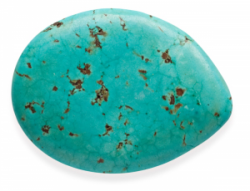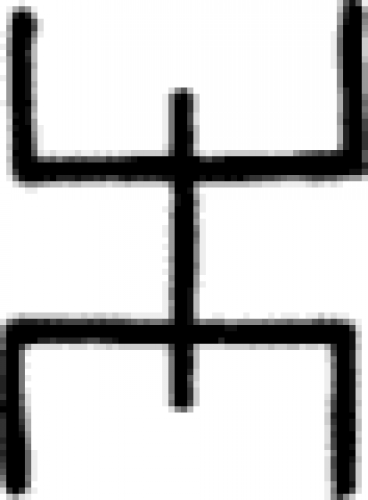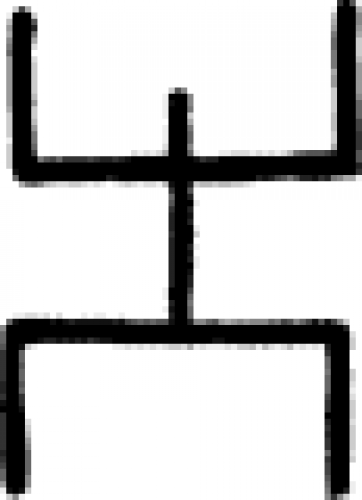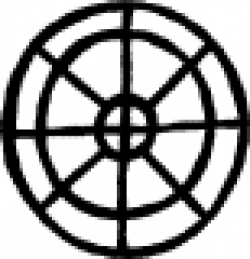Miscellaneous Page #14
This page lists all the various symbols in the Miscellaneous category.
Symbols without any special category attribution but that are widely used worldwide.
Symbols in this category:
Tulare #1
A rock carving discovered in Tulare, California. No contextual information known at this time.
Tulare #2
A rock carving discovered in Tulare, California. No contextual information known at this time.
Turquoise
Like many gemstones, turquoise possesses a number of different symbolic meanings.
Uppsala
Discovered near a cathedral in Uppsala, Sweden, this marking has been interpreted two different ways.
USA (Southeast)
A rock carving discovered in the southeastern area of the United States. No contextual information known at this time.
USA (Southwest)
A rock carving discovered in the southwestern area of the United States. No contextual information known at this time.
V sign
The V sign (U+270C ✌ victory hand in Unicode) is a hand gesture in which the index and middle fingers are raised and parted, while the other fingers are clenched. It has various meanings, depending on the cultural context and how it is presented. It is most commonly used to represent the letter "V" as in "victory," especially by Allied troops during World War II. It is also used by people of the United Kingdom and related cultures as an offensive gesture (when displayed with the palm inward); and by many others simply to signal the number 2. Since the 1960s, when the "V sign" was widely adopted by the counterculture movement, it has come to be used as a symbol of peace (usually with palm outward).
Val Camonica
A Bronze Age symbol carved on the face of Val Camonica in the southern area of the Alps (Italy). One possible interpretation of this family of symbols ('Val Camonica #2' and 'Val Camonica #3') is of stylized human beings, but no contextual information is known at this time.
Val Camonica #2
A Bronze Age (roughly 800 B.C.E.) symbol carved on the face of Val Camonica in the southern area of the Alps (Italy). One possible interpretation of this family of symbols ('Val Camonica' and 'Val Camonica #3') is of stylized human beings, but no contextual information is known at this time.
Val Camonica #3
A Bronze Age (roughly 800 B.C.E.) symbol carved on the face of Val Camonica in the southern area of the Alps (Italy). One possible interpretation of this family of symbols ('Val Camonica' and 'Val Camonica #2') is of stylized human beings, but no contextual information is known at this time.
Val Camonica #4
A Bronze Age (roughly 800 B.C.E.) symbol carved on the face of Val Camonica in the southern area of the Alps (Italy). One possible interpretation of this symbol is of a pair of oxen pulling a plow, but no contextual information is known at this time.
Val Camonica #5
A Bronze Age (roughly 800 B.C.E.) symbol carved on the face of Val Camonica in the southern area of the Alps (Italy). No contextual information is known at this time.
Citation
Use the citation below to add this symbols category to your bibliography:
Style:MLAChicagoAPA
"Miscellaneous Symbols." Symbols.com. STANDS4 LLC, 2024. Web. 26 Jul 2024. <https://www.symbols.com/category/16/Miscellaneous>.
















Have a discussion about the Miscellaneous category with the community:
Report Comment
We're doing our best to make sure our content is useful, accurate and safe.
If by any chance you spot an inappropriate comment while navigating through our website please use this form to let us know, and we'll take care of it shortly.
Attachment
You need to be logged in to favorite.
Log In